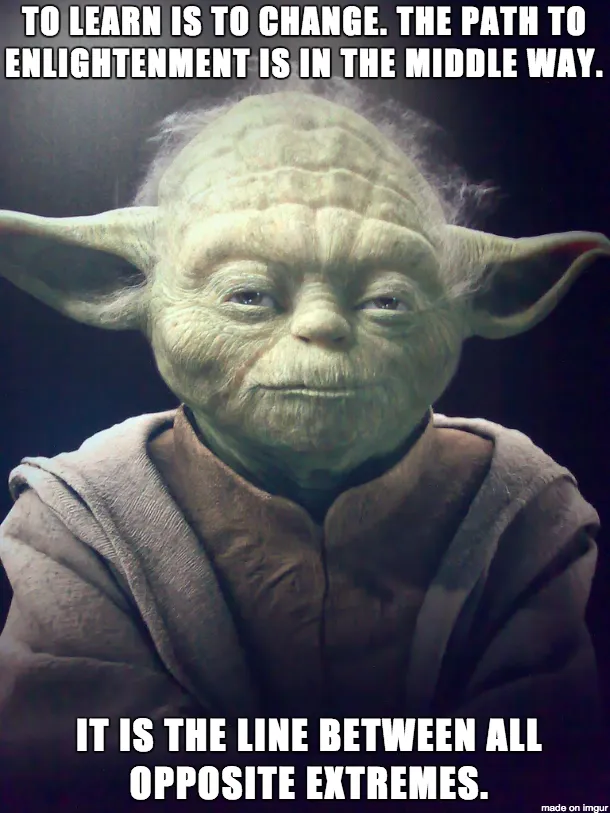
Today I would like to invite you to some brain exercise and to introduce you to one of my favorite methods
"The square of values".
It's nice not only to work with clients but also on your own, when it comes to a particular difficulty that you will encounter in your life again and again. For example, if you are accused of being too "naive " or if you are exaggerated about helping others. If, for example, my family, friends and colleagues keep reminding me of a similar effect or behaviour that causes problems, I should not be resistant to criticism, but rather be able to get to the bottom of things.
Of course facing the beginning of a New Year you are full of good intentions. ... No, what? You gave that up already? Bummer. For everybody who still believes that one can change bad habits: follow me:)
How does that work? And how can I make a learning task out of it, without making a long and wide extension?
"Simple." I orientate myself on the square of values after Friedemann Schulz von Thun:
Unfortunately there is no English translation in Wikipedia for explaining the method. So I took over:
The square of values originating from Nicolai Hartmann (1926) was used by Friedemann Schulz von Thun in 1989 for the interests of interpersonal communication and connected with the idea of development and then called square of values and development.
With the help of the square of values and development, it could be possible to find the necessary counter-quality ("sister virtue") for every human quality (e. g. honesty) (here e. g. tact and sensitivity); only together can both "let the rainbow rise". Honesty without measure can degenerate into brutal openness, measure without honesty into a polite facade. If you have the balance of two values in mind, you can also discover the direction of development: one tends to absolute honesty and must conquer according to tact and sensitivity; the other one exaggerates precisely this quality and should learn to speak honest plain language.
The basic idea of the model is based on Aristotle (ca. 350 B. C.), was further developed by Nicolai Hartmann (1926) and finally borrowed for psychology by Paul Helwig (1936).
Nicomachean Ethics - Character virtues according to Aristotle
| Concerned with | Mean | Excess | Deficiency |
| fear (phobos) | Courage (andreia): mean in fear and confidence | First Type. Foolhardy or excessive fearlessness; is one who over indulges in fearful activities. | Cowardly (deilos): exceeds in fear and is deficient in confidence |
| confidence (thrasos) | Second Type. Rash (thrasus): exceeds in confidence |
Quote:
"Those who flee and fear and withstand everything nowhere will become cowardly, but those who fear nothing and go at everything will be foolhardy. Likewise, whoever enjoys every lust and refuses to abstain from any lust becomes immoderate, but who avoids every lust like an uncouth farmer becomes insensitive."

The instrument of the middle determines the character virtues more precisely. For example, the virtue of bravery is a middle ground between vices of daring and cowardice. The basis for virtues are the actions as well as the emotions and desires. Not brave, but foolhardy is someone who is either completely fearless in a particular situation, even though the situation is threatening, or who ignores his fears in a serious threat situation. The middle therefore - here as with the other character virtues - is to have appropriate emotions and to act accordingly. This doctrine from the middle is presumably not to be understood in concrete situations as normative guiding action, but only as a descriptive instrument of character virtues."
quote-source / translated from German to Englisch
In the systemic notion or Gestalt psychology and its holistic view we do not look at a fixed point, but rather develop the idea of a dynamic balance; similarly as we know it from the concept of yin and yang. The value square corresponds to this holistic conception of dynamic processes.
What fits our modern time?
In addition to Aristotle, there is not only "the right middle" between two evil extremes, but the derivation happens through the ideals, the sister qualities and this gives a coherent picture. It is not intended to eradicate something, but rather to show that the exaggeration is only a form of compensation. And even here a positive connotation can be found.

Let's take an example that matches the platform here.
If you hover your finger over your slider and it doesn't tend to move above the 50 percent mark. Somehow, you can't draw on your full potential. Or, if you don't want to exhaust your ten 100% votes as a minnow a day. Then, for example, you realized a problem: that you are a little stingy.
How do you proceed? Who is equal to the miserliness as an antipole in his extremity?
This is.... exactly: the "wastefulness"! These two negative unhealthy "qualities" form the two lower areas.
Now you ask yourself: what is the healthy way to handle money (power)?
The answer in this particular case is "generosity".
Then you investigate the sister virtue of generosity and that would be "thrift".
Sisters of virtue - the matching opposites!
There are now two qualities/virtues side by side. These form the positive tension, i. e. the golden center. If you are able to weigh up these two you have found the optimal way to make people happy.

Incidentally, I would not recommend starting with a difficulty but with a positive intention.
For example, if I asked you which of the virtues you would like to improve: reliability, trustworthiness, devotion - which one would you choose, because in the back of your mind you suspect that you could develop even more in it?
If you choose "devotion", the procedure for the method of the value square is as follows:
You write the word "devotion"in the upper left corner of your sheet.
Use the graph I gave you with the example of "self-trust" as a reminder.
Then you ask yourself: "If I'm now totally overdoing it and doing too much of the good (for example, losing yourself and doing multiple postings a day on Steemit that deprive you of all your energy): Where do you land?
In the "obsession".
You write this word in the lower left corner of your sheet.
The question to be asked would be: In order not to be obsessive, which development direction would you have to take? You would have to learn to be "even-tempered", that is, to let go of constantly and with clenched teeth following the object of your desire.
Starting from the obsession,
you draw a diagonal upwards to the right corner in the shape of a staircase
(I did that in the chart in the beginning of this post as a straight arrow, because I was too lazy).
You ascend this thoughtfully in the direction of "equanimity".
Arriving there, you ask yourself:
"And what if I exaggerate and my serenity is transformed by exaggeration? Where does that take me?
The answer is "indifference".
Now you have completed the square.
- Devotion = left upper corner
- Obsession = left bottom corner
- Equanimity = right upper corner
- Indifference : right bottom corner
To move within the lower realm is not something one wants to do on purpose.
Bad feelings occur: Nothing is really in such a way that it moves you to surrender, nothing seems worthy to deal with it in depth. There is a negative tension between the two terms below, where you move between "plague" and "cholera".
Just hold on for another minute. Does that feeling sound familiar to you? To move through the day and sway between "enthusiasm" and "leaden fatigue", for example? Then welcome to the club of negative suspense!
I had a young client whom I coached and she told me that she constantly is either stressed or bored. I made a quick drawing of the squares and asked her to find the terms. We were ready in ten minutes and I was able to watch her drop the dime (which is a German expression when it finally "clicks").
Nobody likes to move between extremes. And of course nobody should.
It is not for nothing that Buddhists praise the Way of the Middle and I suspect that the Systemicists also knew about it without necessarily linking it to Asian teachings.

Call it the "Weltengeist" (thanks @antikesdenken for this phrase, which hit me yesterday by reading your article) because people all over the world came to the same conclusions without even knowing about one another.
I did the square of values a lot when I was chewing on a certain issue but also when I was in a good mood and just wanted to contemplate about something I was after. Also this is just a simple way to practice systemic thinking. The more often I dig into those little exercises the better I get.
If you like this kind of stuff, take a peace of paper and get started.
It requires some practice and you may make mistakes at the beginning - maybe you won't find the terms right away or the square won't come out logically. But as time goes on, you'll get better. I do this sometimes just for fun.
For me this is like Sudoku but not with numbers. I hope, you are going to have some fun with making your own squares.
Thank you for reading!
Text sources:
https://de.wikipedia.org/wiki/Werte-_und_Entwicklungsquadrat
https://en.wikipedia.org/wiki/Nicomachean_Ethics
https://de.wikipedia.org/wiki/Aristoteles#Tugenden
https://en.wikipedia.org/wiki/Systemic_therapy_(psychotherapy)
http://arbeitsblaetter.stangl-taller.at/KOMMUNIKATION/Wertequadrat.shtml
[1]:"Positive Psychotherapy (PPT) is a psychotherapeutic method developed by Nossrat Peseschkian and colleagues in Germany since 1968. It can be described as humanistic psychodynamic psychotherapy based on a positive perception of human nature. PPT is an integrative method that includes humanistic, systemic, psychodynamic and CBT elements. Today, there are centers and training courses in around twenty countries worldwide. It should not be confused with positive psychology." source: https://www.peseschkian-stiftung.de/methode/?lang=us
Picture sources:
Photo by Pineapple Supply Co. on Unsplash: https://unsplash.com/search/photos/new-years
diagram square of values (made by me in Powerpoint)
Sister virtues: Photo by Elizabeth Tsung on Unsplash https://unsplash.com/search/photos/matching-opposites
Joda: https://www.flickr.com/photos/fbueno_net/3242489460 - altered from: https://imgur.com/gallery/8dQF67y
2018: Photo by NordWood Themes on Unsplash: https://unsplash.com/search/photos/new-years
To all of you - I thank you for giving me company, reading my articles, bringing me joy & constructive critiques -
I wish you a HAPPY NEW YEAR
